These easy-going shrubs are beautiful and they bare blueberries within 2-3 years. I just bought mine at a nursery because early spring is the best time of year to plant them. I talked to the people at the nursery, did some online research, and consulted with my mom to find out as much as possible about the best way to plant blueberries. Here I will share the what I learned along with my experience on how to plant blueberry bushes and benefits of growing blueberry bushes.
Blueberries are native to North America and have had an impact upon the culture, cuisine, and even survival of Americans for centuries. Blueberries are high in nutritional value, have medicinal uses, and can even be used for making natural dyes.
Benefits of Growing Blueberry Bushes
- Attractive Shrubs which are great in the home and garden landscape, with pretty little white bonnet flowers.
- Insect resistant.
- Bear highly nutritious, delicious blueberries.
- Perennial plant, which will continue to grow 6-10 feet high depending on the variety.
- Once established they do not require a lot of maintenance.
- Very productive: 10 year old blueberry plants can yield 14 quarts of blueberries.
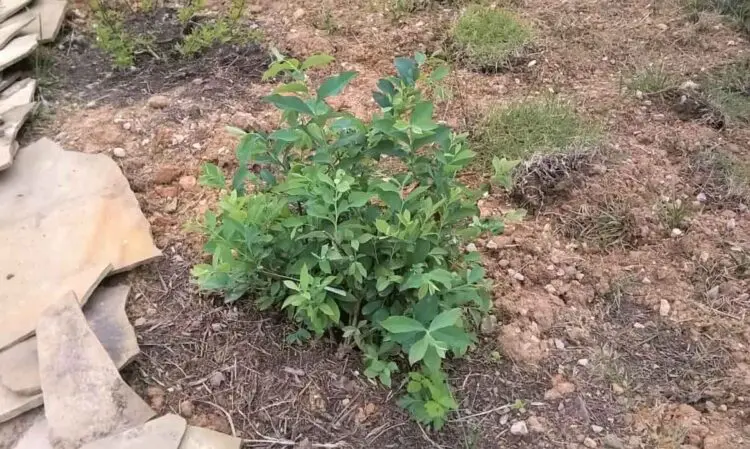
When To Plant Blueberry Bushes
If you are wondering when to plant blueberry bushes, the best time of year is early spring. You will want to wait until the last frost date has passed for your time zone and then feel free to get them in. If you wait till the summer, it is harder on the plant since the roots dry out so much more quickly and frequently. You want the blueberry bushes to have a chance to grow and flourish before they die lose their leaves for the fall and winter. So the best time to plant blueberry bushes is early spring.
How To Plant Blueberry Bushes:
1. You will need at least two blueberry plants of different cultivars so they can cross-pollinate. You can ask for two or more cultivars at your local plant nursery. They should have these available since it is common knowledge amongst gardeners that these plants have to be cross pollinated in order to bear blueberries. This is the most important tip for how to plant blueberry bushes.
2. Choose a sunny location. Blueberries like the sun and they produce more fruit in the sun.
3. You will need ACIDIC SOIL IN A PREPARED BED, WITH A PEAT MULCH. Some people shy away from growing blueberries because they need acidic soil, which is a rarity in most gardens and homesteads. But this is easily remedied. You can buy a soil amendment especially for this purpose. But, I prefer the natural solutions: if you have Cedar trees near you, or a Juniper or other established tree with acidic properties, such as pine, you may have the perfect mulch and soil amendment right under these tress, lying on the forest floor- pine needles, cedar needles, cedar shavings, and the soil under one of these acidy plants. Use these to prepare your blueberry “bed” or blueberry “holes.” Soil pH should be 4.5 to 5.5. A liberal amount of peaty material is needed; a mulch of peat moss is fine.
4. Dig your holes wide with a depth equal to the pot height. You want it to have plenty of room to spread its roots, into lose acidic soil, with peat for good drainage. Plant blueberry bushes about 3 feet apart.
Once you pick out your plants, different cultivars for cross-pollination (blue berries are not self-pollinating), and you prepare the soil and the location by making happy holes for transplanting your new plant directly from its package into the ground, you will want make a good effort in the planting process. These blueberry growing tips are an excellent investment for your future plant and its and productivity. I got these blueberry growing tips from an old gardening book I trust, (affiliate link) Rodale’s Encyclopedia of Organic Gardening, 1973.
” Upon arrival of the plants (rooted shrubs) for setting out, it is urgent that the roots be protected from drying. Cover them at once with soil – if unpacked. Do not expose the roots to the drying effects of sun or wind.”
“Dig the hole large enough to receive the roots without bending or cramping.”
“When the hole is half filled, tamp the soil firmly. Fill the hole and tamp the soil harder. Leave loose soil on top. Leave a saucer like depression at the top to catch water.”
5. Add a layer of organic mulch (pine bark, needles, or wood chips) around the base to retain moisture, regulate temperature, and maintain soil acidity. Water your new plants thoroughly to dampen the roots and them settle in to the soil. And that is it for how to plant blueberry bushes! You have done it!
MY PRO TIP: When at the nursery, ask for a plant that is 2 years old, and has a jump-start on the 1 year old plants. At the nursery where I got mine, the smaller plant was $10, while they older and larger plant was $20.
Blueberry Bush Fertilizer
Lots of folks want to make their plants grow with fertilizer. You can fertilize a blueberry bush after planting, but timing and method are important to avoid over-fertilization, which can harm the plant’s delicate roots. Here’s how to approach it:
- Wait a Few Weeks
- Allow the plant to settle in its new location for about 3–4 weeks before fertilizing. This gives the roots time to establish without the stress of immediate fertilizer.
- Choose the Right Fertilizer
- Use a fertilizer designed for acid-loving plants, such as ammonium sulfate or a specific azalea/rhododendron formula.
- For an organic option, use blood meal, fish emulsion, or cottonseed meal.
- Apply a Light Dose
- Use about ½ the recommended rate for an established bush during the first application. Young plants require less fertilizer to avoid root burn.
- Apply Fertilizer Safely
- Spread the fertilizer around the drip line of the plant (the area directly beneath the outer edges of the branches). Avoid placing fertilizer directly at the base of the plant to protect the roots.
- Water the area thoroughly after fertilizing to help nutrients soak into the soil.
- Monitor Growth
- Check the plant’s progress over the season. If growth seems slow or leaves are pale, a second light application 6–8 weeks later can be beneficial.
Blueberries Q&A
Do you have questions about growing blueberries? Let me know and I will see if I can answer them for you or get an expert to share their tips. Here are the two most frequent questions I have received and the answers are from Bushel and Berry® / Star® Roses and Plants woody portfolio manager Kristen Pullen.
When are blueberries in season?
The harvest calendar for blueberries varies slightly depending on where you’re located in North America. When looking at it by region, here are some typical harvest windows:
- Northeast: Late July – September
- Southeast: April – May
- Midwest: Mid-July – Early September
- Northwest: July – September
- Southwest: April – June
In addition to this, there are varieties bred to produce fruit early, mid, and late in the season. This is how farmers help keep the grocery stores stocked for longer periods of time, but you can also utilize these traits to lengthen the harvest window for your edible landscape at home. You can find the fruiting season by variety on the plant tags or listed online.
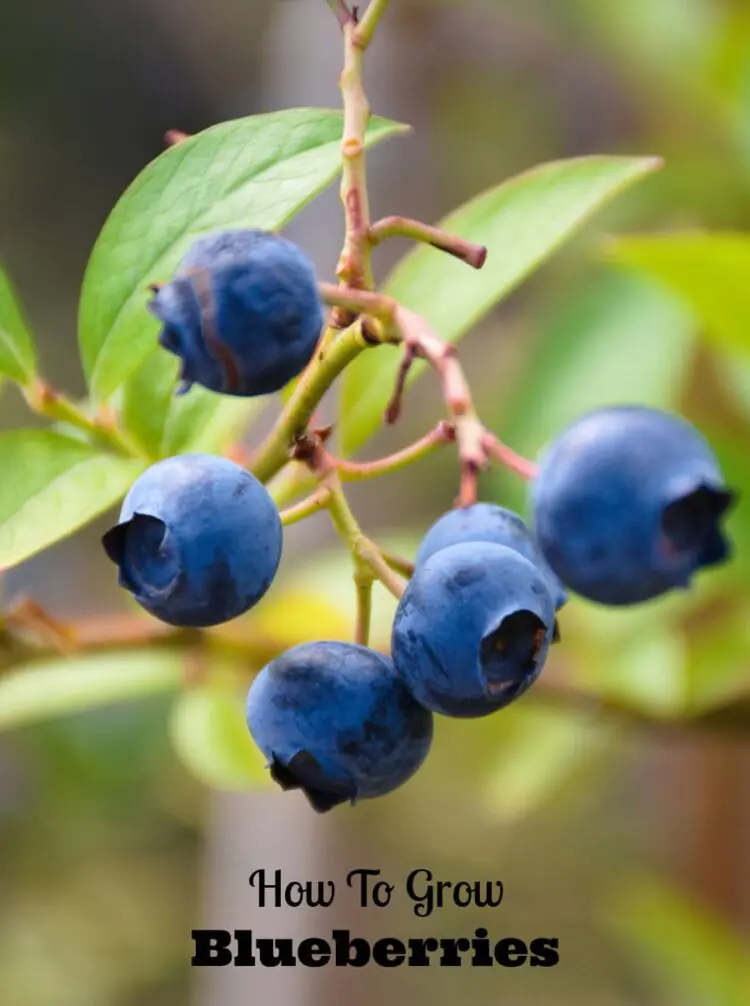
How big do blueberry bushes get?
Blueberry bushes fall into five major categories in North America: northern highbush, lowbush, southern highbush, rabbiteye, and half-high.
Northern highbush blueberry is the most common type of blueberry in cultivation. This category is native to the eastern and northeastern United States and grow between 5-9ft in height.
Lowbush varieties are shorter than highbush, generally reaching about 0.5-2ft in height.
Southern highbush varieties are characterized by their ability to produce fruit in areas with mild winters. They can reach 6-8ft in height at maturity.
Rabbiteye blueberries are native to the southeastern United States and can tolerate long, hot summers. They’re more susceptible to winter cold than their northern cousins. Their height is between 6-10ft.
The Half-high group are blueberries bred from a cross between northern highbush and lowbush blueberries. This results in a medium sized plant that reaches 3-4ft high.
When To Prue Blueberry Bushes
Pruning blueberry bushes is essential for healthy growth, better fruit production, and maintaining their shape. The timing depends on the type of pruning:
1. Winter Pruning (Dormant Season)
- When: Late winter to early spring, before new growth begins (January to March, depending on your region).
- Why: This is the best time for major pruning because the plants are dormant, and it’s easier to see the branch structure.
- How:
- Remove dead, damaged, or diseased wood.
- Cut out older, less productive canes (usually 6+ years old) to encourage new growth.
- Thin out overcrowded areas to allow better light penetration and airflow.
- Shape the bush for balance and structure.
2. Summer Pruning (After Harvest)
- When: Immediately after the fruiting season ends.
- Why: Light pruning helps redirect energy into the plant for next year’s growth and maintains the bush’s size.
- How:
- Remove weak, spindly shoots.
- Trim back overly long branches to keep the bush compact.
How To Prune Blueberry Bushes
- Start pruning after the first two years to let young plants establish.
- Use sharp, clean pruning tools to prevent plant damage and disease spread.
- Dispose of pruned material, especially diseased branches, to prevent contamination.
If you’re in a region with harsh winters, wait until the risk of severe cold has passed before pruning.
Conclusion
Self-pollinating compact berry plants make perfect house gifts and can be found at independent garden centers or online sellers. Here is my Amazon affiliate link to a great blueberry plant that grows well even in pots!
I hope you found these benefits of growing blueberry bushes to be as exciting as I do. Why not have edible landscaping around your house? I also hope you found these tips on how to plant blueberry bushes useful. Do you think you will grow blueberries this year?
Related Posts:

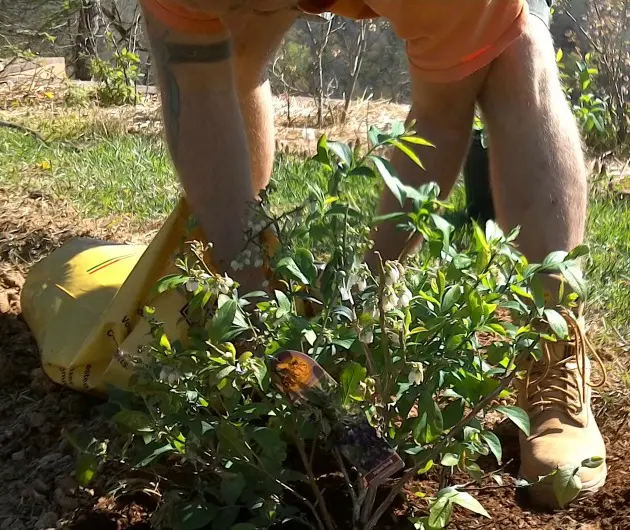
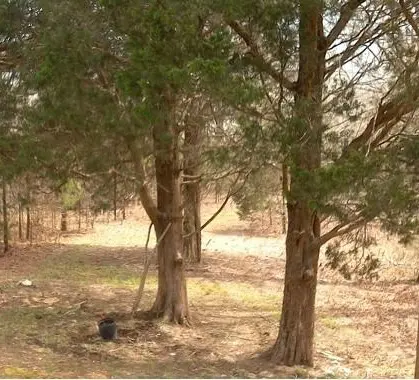
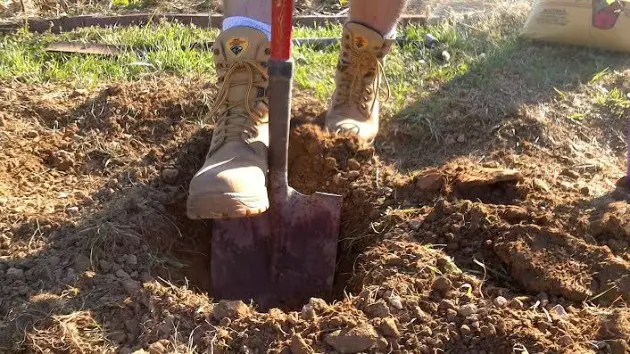

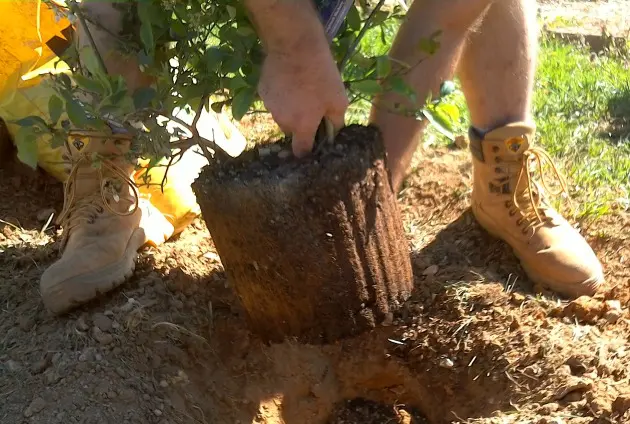
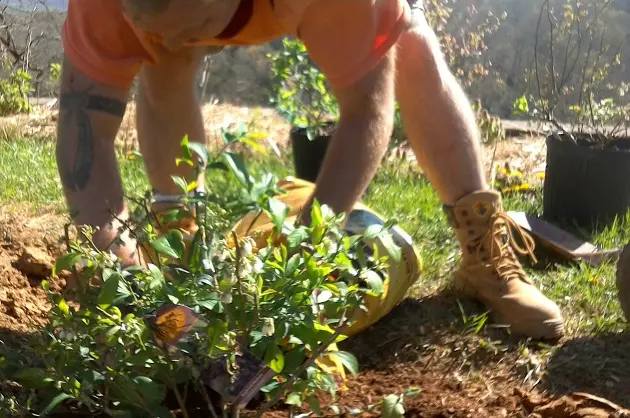
Peggy says
I moved into a home with three blueberry bushes. The first year the deer and birds ate everything. A simple $5 net stopped that since then.
Blueberries are a rewarding addition to any garden, but proper care and planning are essential for thriving plants and abundant harvests. Here are important considerations, especially for those growing blueberries in warm climates, looking for better crops, or planning for following years: Pollination for a Better Crop and Irrigation.
Although blueberries are self-pollinating, planting two or more varieties that bloom simultaneously encourages cross-pollination, resulting in larger berries and higher yields. Bees play a significant role in pollination, so avoid using harmful pesticides near the plants.
Consistent watering is crucial, especially in warm climates. Blueberries have shallow root systems and require about 1–2 inches of water per week. Drip irrigation systems are ideal, as they provide slow, deep watering without wetting the foliage.
Stella says
Thanks for sharing how to plant blueberry bushes. What a remarkably useful article. I love that blueberries are perennial plants that increase in productivity with age.
Julie says
Love this article about how to grow blueberries! I’m going to plant some blueberry bushes this year. Thanks for the inspiration! I hear that, with proper care, mature plants can produce 5–10 pounds of fruit per bush annually. Wowzer!